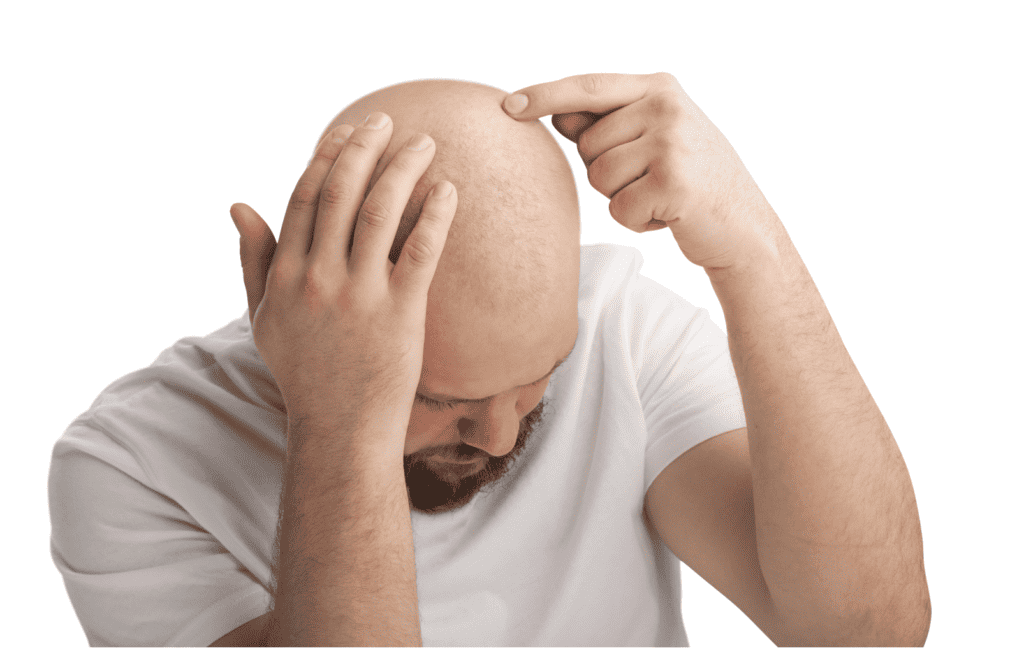Bald Men and Head Lice: Debunking Myths and Understanding Risks

When it comes to head lice, the popular perception is that these tiny critters have an affinity for lush, abundant hair. But what about bald people? Are they immune to the infestation that plagues so many heads? And do balding heads provide a less hospitable environment for these pests? This blog aims to shed light on the curious case of bald people and head lice, debunking myths and clarifying facts along the way.
What are Head Lice?
Before delving into the specifics of baldness and lice, it’s essential to understand what head lice are. These tiny, wingless insects feed on human blood and are usually found on the scalp. Female lice lay 3-10 eggs daily (known as nits,) that attach to hair strands very close to the scalp.
The Bald Truth: Can Bald People Get Head Lice?
Less Likely, But Not Impossible
Contrary to popular belief, bald people are not entirely immune to head lice. While it’s true that lice have a preference for attaching their eggs to the base of hair strands, they can still survive on a bald scalp for a short time by clinging onto the small amount of hair or fuzz most bald people still have. However, sustaining an infestation becomes significantly harder for the lice without sufficient hair. A “buzz cut” is not the same as being “bald” and our clinic techs have combed 6-10 nits from children and adults who were “certain” they did not have a lice infestation because they shaved the head. By leaving 1/8th of an inch of hair, adult lice were able to attach to the scalp and being laying eggs.
No Hair, Fewer Hiding Spots
A bald or nearly-bald scalp offers fewer places for lice to hide and lay their eggs, making detection of adult lice more visible and removal much easier compared to a head full of hair. However, even nits are often difficult to see on the shortest hair. They are able to match the color of the skin or hair, making them even harder to see.
Lice Transmission: How Bald People Could Still be Affected
- Contact with Infested People: Physical contact with a lice-infested person can transfer some lice to a bald person’s scalp.
- Sharing Personal Items: Lice can also be transmitted through sharing combs, brushes, hats, “hoodies” or even headphones.
Precautions for Bald People
- Avoid Head-to-Head Contact: Particularly in settings where lice infestations are common, like schools or summer camps where they may be in close contact with children.
- Be Cautious with Shared Items: Do not use shared items that have touched someone else’s scalp.
- Routine Checks: Periodically inspect your scalp for signs of lice or nits. A magnifying glass may be helpful for this.
- Immediate Treatment: If you notice any lice, consult a specialty lice clinic for the best and most effective dehydration 3-step process for treatment. Do NOT rely on topical insecticides, toxins or pesticides or natural remedies such as mouthwash, olive oil, Tea Tree essential oil, or mayonnaise as they are not effective. NEVER, ever, try using dangerous toxins such as gasoline, turpentine or motor oil.
FAQs: Addressing Common Misconceptions
- Are bald people immune to lice?
No, they are just less likely to sustain a long-term infestation. - Can lice live on body hair?
Head lice are specifically adapted to live on the scalp, but there are different types of lice that can infest body hair. - Are lice a sign of poor hygiene?
No, lice can infest anyone, regardless of their cleanliness. Studies show that head lice prefer clean hair.
Conclusion
While it’s less common for bald people to have a sustained infestation of head lice, they are not entirely immune to these parasites. Being proactive about prevention is key to avoiding a lice problem, no matter how much hair you have—or don’t have. Always consult a lice removal specialist, like ours, for accurate diagnosis and the 3-step dehydration process in-clinic to be lice free in about an hour. Here’s to staying lice-free, whether you’re bald or not!
